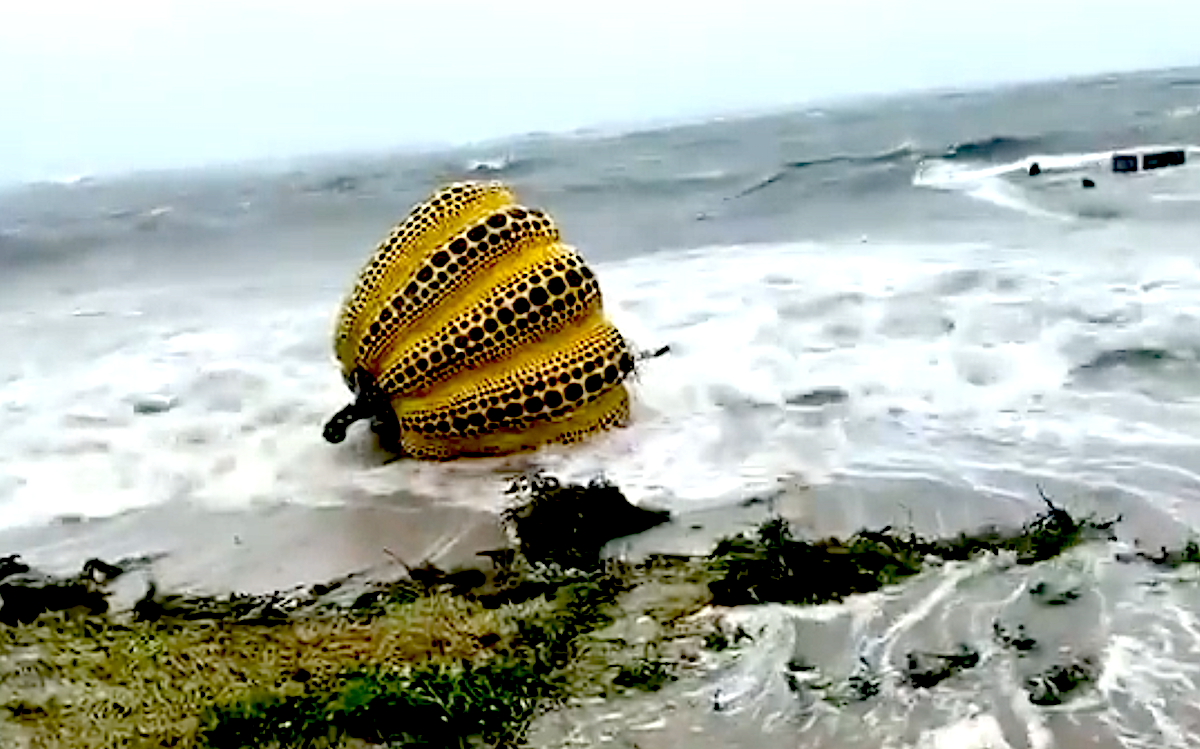An iconic Pumpkin sculpture by the artist Yayoi Kusama valued at $3m has been uprooted and washed into the sea during a typhoon in Naoshima, Kagawa Prefecture, western Japan. The sculpture had previously been moved to safety during such storms, which are happening more and more frequently due to climate change.
Climate Takes Revenge On Kusama Pumpkin
Kusama’s pumpkins have had a history of mishaps, including a recent incident with German socialite Angela Gulbenkian who was jailed for fraudulently selling a similar Kusama pumpkin to a buyer for $1.3 million, knowing that she didn’t own the sculpture. Another Kusama pumpkin was damaged during a 2017 exhibition titled “Infinity Mirrored Room—All the Eternal Love I Have for the Pumpkins” at the Hirshhorn Museum and Sculpture Garden in Washington, D.C, when a visitor tripped while taking a selfie. The video (see below) makes the sculpture look like a giant jelly mould as it is thrashed by the rough seas.
The Victoria Miro Gallery, Kusama’s London dealers describe the artist’s Pumpkins as follows, “Since her earliest formative years, in a family who made their living cultivating plant seeds, Kusama has been fascinated by the natural world. She has always had an affinity with nature, mainly vegetal and floral life. Still, the pumpkin continues to occupy a special place in her iconography and is a motif she has returned to repeatedly throughout her career.
The plant appears in some of her paintings and works on paper as early as 1948. After her return from New York to Japan in the 1970s, she rediscovered the theme. She began making serial works depicting the pumpkin in various media: paintings, prints, sculptures, installations, and environmental works. She has made tiny pumpkins no bigger than a key ring and monumental pumpkins that dwarf the viewer with their scale. She has placed pumpkins in box structures and mirror rooms and used the distinctive knobbly patterning of their skins as inspiration for her unique dot-patterned paintings and textiles. In 1993 pumpkins formed part of her presentation in the Japanese Pavilion at the Venice Biennale. In 1994 her iconic exterior sculpture of a giant yellow and black pumpkin was sited at the Benesse Art Site Naoshima, an island in Japan’s inland sea dedicated to displaying art within nature.
The artist has a strong personal identification with the pumpkin and has described her images as a form of self-portraiture. She admires pumpkins for their hardiness and everyday quality, as well as for their unique and pleasing physical attributes. She has written.”
直島のシンボルが…..#台風9号 pic.twitter.com/7l9b65ivSe
— 歪みっぱなしの帝国. (@ppdisundia) August 9, 2021

